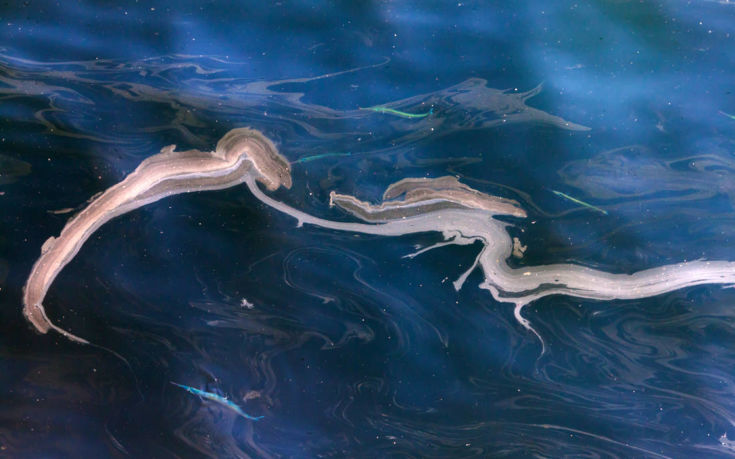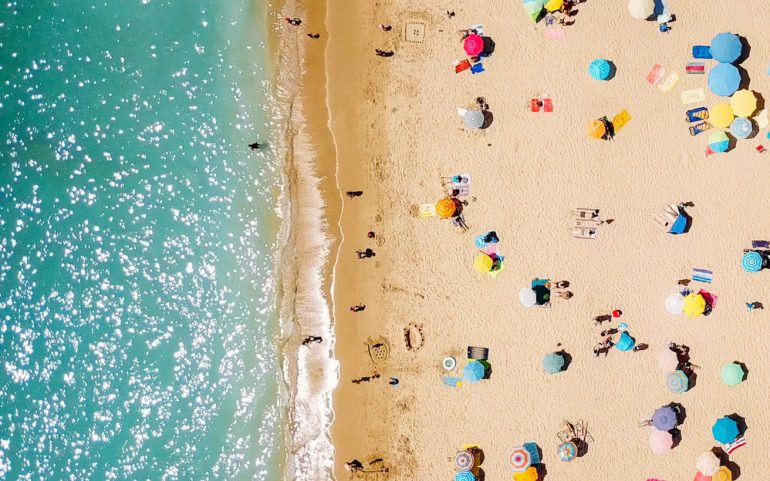One of our main questions in the summer, during the holidays and not only is how to find out if a sea is suitable for swimming or if it is polluted. The truth is that it is difficult to see with the naked eye, since the microbial content is what determines the suitability or not of water.
Does the presence of sea urchins in the sea mean that it is clean?

As Mr. Hatzianestis explains, there is no absolute correlation as many believe: “First of all, the presence urchins it also has to do with what the habitat of the area is like, if there are rocks or sand, that is ". The presence of urchins does not mean that a sea is necessarily clean: "There are many factors that can affect the abundance of these species," he explains.
What about chemical pollution in Greece
"Because we are talking about bathing water, the main issue is the microbial load. That is, if there are coliform bacteria and enterococci. This kind of pollution usually has to do with sewage. Chemical pollution which could seriously affect the health of swimmers is a completely different case. In general, in Greece the seas do not have chemicals such as heavy metals, hydrocarbons, we do not have a large chemical industry, the seas are very clean ", emphasizes the director of the Institute of Oceanography.
The green and the yellow ones in the waters and on the rocks
This is the phenomenon of hypertrophy. Many times we see a "blur" in the water or a green in the rocks that indicates a large increase in phytoplankton. This means that something is falling in that area, which is usually fertilizer or pesticide. According to Mr. Hatzianestis: "There are many areas that do not have a sewerage network, so sometimes sewage can reach the sea and burden the area. A substance falls which is either an organic load or nutrients from fertilizers which are not necessarily toxic or dangerous. They provide great food to marine organisms and they grow too much. It is something that becomes visible to the eye. And so, this phenomenon is created which can be either green, or yellow or even red ".

"The danger has to do with what kind of substances have fallen and which have already been mainly developed. Often, the subject is aesthetic. Of course, there are cases where toxic species can develop. Overgrowth can also lead to a decrease in oxygen or odors of hydrogen sulfide when these organisms decompose. In Greece it is not so common but there are areas that occur, such as in Thermaikos for example. It happens mainly in closed seas and has to do with the winds "he adds.
Are sea foams a worrying sign?
And foaming in the water indicates that we may have an outflow of an organic substance from an adjacent stream or from land. The presence of foams or bubbles, however, is not a safe criterion for discarding a sea as they can even come from natural substances.
But even when we talk about pesticides, the risk is low: "In order to cause problems for people who swim, they must be in huge quantities," explained the director of the Institute of Oceanography.
Are the seas that have algae clean or not?

There are many who support seaweed as an indicator of purity. On the other hand, some people hate to bathe in water with algae and think that it is dirty. What really applies?
The seaweed is a sign of health. And especially the Poseidonias, a classic species in our country, show that the sea is clean. Even the brown ribbons we see in the fall, flooding the beaches and even creating mountains on the shore, are a sign of a healthy ecosystem. Poseidonia and algae turn brown when they complete their cycle and die. And we should not collect them at all, it is good for the region to have them ".
Iridescence on the sea surface

Iridescence may be an indication of the presence of petroleum elements. The oil is visible to the eye even in very small concentrations. The brown color of the water, however, may also be the result of overgrowth of plankton, as explained above.
Regarding the Saronic Gulf, the Institute of Oceanography, which has carried out the relevant studies, assures us that since January 2018 there are no signs of contamination by the oil of the "Holy Zone". Measurements were also made last summer, for precautionary reasons. The general situation in the area is getting better with the higher cleaning of Psyttalia.
Deep water beaches are preferable to shallow ones
"In deep water and in heavy water, if a substance falls, it will dilute very quickly. It is completely different to have a closed and shallow place that has no water circulation and if something falls it will create a very intense problem. The deeper the water, the naturally cleaner the area will be.
Avoid places where there are streams and pipes.
The microbes are found mainly in areas with urban wastewater. The general rule is that we should avoid places where there are pipes as well as places where there are streams: we should not swim near its mouth.
In addition to the advice of scientists, it is very useful to keep in mind the research that is published from time to time, on the suitability of the coast for swimming.
